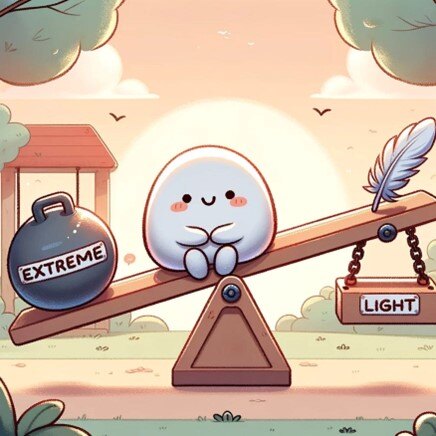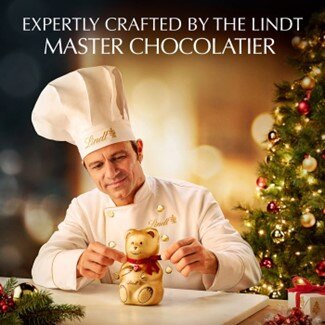Better Than Average
Introducing our third Sales Trigger
Andrew Watts, Holly Murrell, Cai Jin
Imagine that you are in a supermarket and choosing a bottle of wine to take to a dinner party. There are many bottles to choose from, all with different price points. Do you choose a cheaper option, an expensive option, or something in the middle? Weighing up your options in the aisle, you consider the possibilities…
What if the cheaper wines aren’t very nice, what if someone thinks I’m being stingy? What if it tastes like vinegar? But I can’t justify spending that much on the high-end options, it’s too close to payday to splurge. Suddenly, the mid-priced bottle draws your attention, a compromise between the two extremes. Surely this option will be better quality than the cheaper wine without the high price tag of the expensive bottle.

Does this sound familiar?
This is a result of the compromise effect. An unconscious bias that causes us to gravitate towards middle ground.
Don’t believe us? What if we told you that medium was the most popular size of coffee all over the world? Research by Dilip Soman showed that 74% of all coffee sold in coffee shops in different countries is a size medium. This is despite the fact that the volume of coffee in a medium cup differs between shop to shop and country to country.
Stanford professor, Itamar Simonson, attributes this popularity to the compromise effect. By providing a middle option between two extremes, you offer consumers a compromise, which people tend to choose when they either have no strong preference or aversion to the choice or when they find it difficult to evaluate their choices.
Whilst we rationalise our choices in our own minds, the majority of our purchasing behaviour is governed by unconscious biases and heuristics such as the compromise effect. By tapping into consumer psychology and understanding behavioural patterns, brands can harness these biases, using them to increase loyalty and boost sales.
Working alongside Durham University Business School, KHWS have made this process accessible for brands, identifying the leading biases and unconscious cues that nudge purchase of your brand - without blinding you with behavioural science and academic literature in the process.
By studying and distilling the essence of over 120 heuristics and biases, we formed 9 Sales Triggers, which allow brands to harness the power of the unconscious to drive engagement and boost your bottom line. Our Better Than Average Sales Trigger provides a way for brands to overcome the Compromise Effect and use it to their advantage.
For some brands, the middle ground is the optimal space to operate. Think about that wine example above. But what about brands that do not fall into this middle ground? How can brands nudge consumers to trade up, or even down, to their product or service?
They can do so with the use of our Better Than Average Sales Trigger, which gives consumers a reason to trade up or down, nudging people out of the middle ground and towards your brand.
Moving on up
Samsung
Value added
Over the years, there has been little innovation in the TV category. Yes, they have gradually become sleeker, sharper and more sophisticated, but they have remained a black screen when not in use. The only real difference is that these screens are lighter in weight, take up less space and due to the absence of the dust riddled box attached to them, they can now be hung on a wall.
In 2017, electronics giant Samsung launched a new category of TV, The Frame. A fully functioning, Ultra HD flat screen smart TV that doubles as a work of art when not in use. The Bruce Wayne of televisions, if you will. Granted, this TV does not don a bat suit and serve vigilante justice by night, rather, the elegant piece of kit swaps the cape for a detachable bezel frame and a library of art to display. Thus, seamlessly blending into your home.
By running our Sales Trigger Insight Tool, KHWS identified that communicating the value added in terms of style would successfully nudge shoppers to purchase this new category of TV. By showing consumers how they could have an aesthetic TV, without compromising on the tech side, shoppers were able to see how The Frame could enhance their home.
.
Launching with ‘Beauty and Brains’, Samsung drew consumers attention to the value added by The Frame in comparison with other TVs. By launching with this line, sales of The Frame exceeded targets by 400%, highlighting the value of launching NPD with messaging that you know will resonate with consumers and effectively nudge purchase.
Lindt
Expertise
How better to nudge shoppers out of the middle ground than by communicating your expertise? This is something Lindt have done, and continue to do, very well.
Throughout their advertising, Lindt never fail to shine a light on their Master Chocolatiers, giving consumers a peak behind the curtain into the kitchen to show products being made with care, love and precision before panning to satisfied consumers. We simply default to the middle ground.

In fact, Lindt’s entire brand is built on the expertise of their Master Chocolatiers, and the superior quality that this expertise offers. The relationship between expertise and quality is amplified by Lindt in ATL messaging and at point of sale, as shown by the product description below:
‘Since 1845, the Lindt Master Chocolatiers have combined their expertise with the highest quality ingredients from around the world to produce the finest chocolates.’
By recognising and leveraging the power of both expertise and quality in nudging shoppers to trade up to their brand, Lindt have become synonymous with gifting.
Think back to that wine example earlier, but instead imagine that you are in the supermarket to purchase chocolate to give as a gift. Do you go with an own brand option, mid-market option (such as Cadbury’s Milk Tray) or a box of Lindor Truffles?
In this situation, Lindt’s positioning successfully nudges shoppers to trade up, as their superior quality and expertise will show the recipient that you care.
What goes up, must come down
Aldi
Aldi are a great example of a brand that uses the Better Than Average Sales Trigger to encourage consumers to trade down from traditional retailers to their affordable prices.
But how do they do it?
Comparison
Aldi openly encourage consumers to compare them to other retailers, especially premium ones – we’re looking at you M&S…
In 2021, M&S accused Aldi of infringing its Colin the Caterpillar trademark with their near identical Cuthbert the Caterpillar cake. To which, Aldi responded on Twitter with “This is not just any court case, this is... #FreeCuthbert.”
And if you’ve read our Instant Gratification thought piece, then you will recognise this style of writing as the introduction of M&S’ most famous ad series, showing Aldi’s intent to stoke the fire of comparison amongst the public.
Whilst other retailers may have shied away from the battle, Aldi used it as a vehicle to drum up comparison and engage with their audience across social media. A move that ultimately paid off, resulting in over 30 million views across social media, 1,400 pieces of written coverage, #FreeCuthbert protests outside M&S and invitations for Cuthbert to appear on panel shows. Causing significant impact that ultimately earned Aldi the 2021 Marketing Week Award for Social Media.
Even a year after the court case was settled, Aldi released an ad to reignite the comparison. The ad shows a group of Caterpillars at a party taste testing Colin and Cuthbert cakes, discussing the lack of differences between the two, other than the price. The ad then closes with the statement “Aldi. Like M&S. Only Cheaper.” The comparisons running through the ad and the final line directly shows the benefit of trading down to Aldi from M&S: similar quality for a lower cost.

Award-winning
Whilst maintaining the theme of comparison, this is not the only iteration of Better Than Average that Aldi use to encourage consumers to trade down from traditional supermarkets.
In their recent ad, Aldi take a wrecking ball to other retailers ‘Aldi Price Match’ plaques, figuratively knocking aside the competition. Did I mention that the wrecking ball was branded with their Which? Cheapest Supermarket 2023 award? In fact, the whole ad is peppered with awards Aldi have won for their food range in 2023, including Good Housekeeping’s Food Award and Retailer of the Year for the Quality Food Awards.
The use of these awards within the ad highlights the quality of Aldi’s food range, whilst comparing them to other retailers. The ad is set to the tune of MC Hammer’s Can’t Touch This, swapping out the lyric touch for match. Adding another layer of comparison by sending the message that Aldi’s food is both better quality and lower in price – an important message to send to consumers during the ongoing cost-of-living crisis in an attempt to increase growth.
The take away?
Within the majority of categories, consumers are overwhelmed with choice in products and brands. Whilst the middle ground may work for some, in order to stand out in any space, brands should leverage their distinguishing factors to nudge shoppers to trade up or down.
Unfortunately, it is not a one size fits all as to what brands should leverage, for instance, whilst expertise works wonders for Lindt, it may not work as well for Aldi. Both the nudges that brands use and the direction they encourage shoppers to trade up/down in differs between brands and categories.
Therefore it is key that brands utilise marketing that resonates with their consumers. By identifying and leveraging your brand’s unique truths, your marketing has a much better chance of achieving this, and with it, higher sales.
Get in touch for more information on how we deliver creativity that resonates using our proprietary creative insight process.
